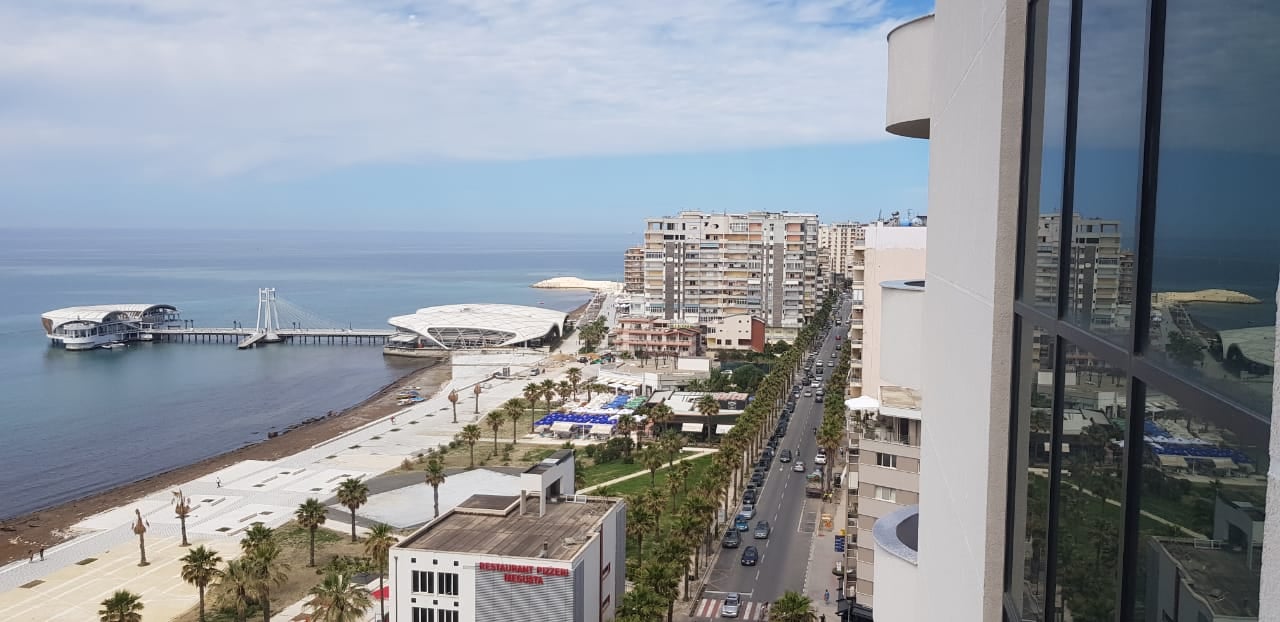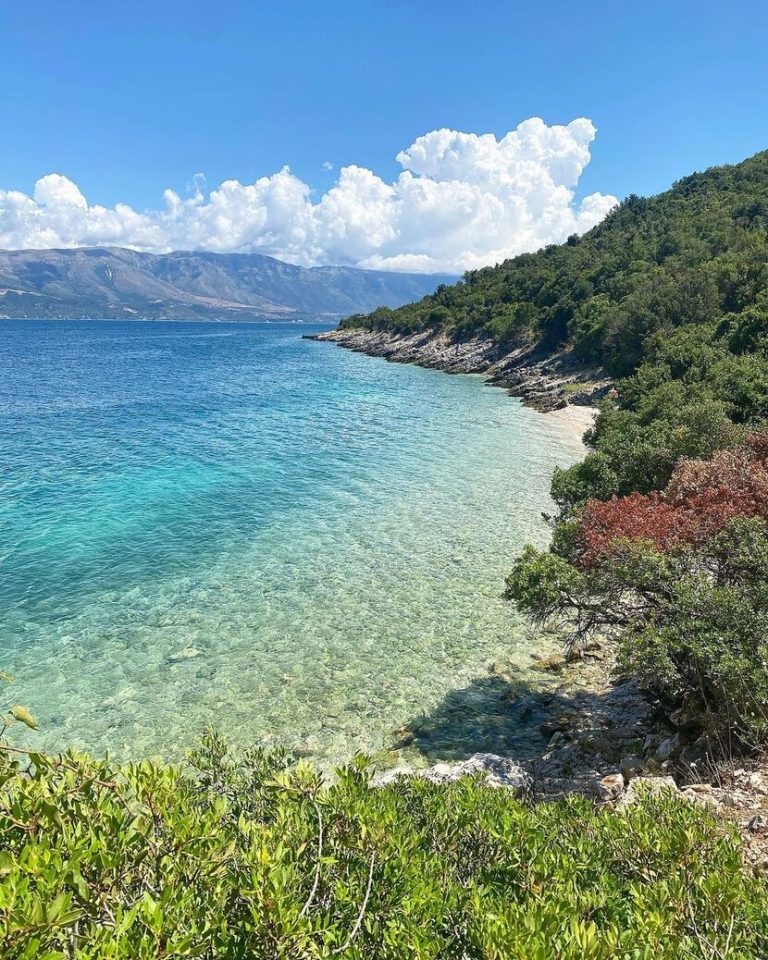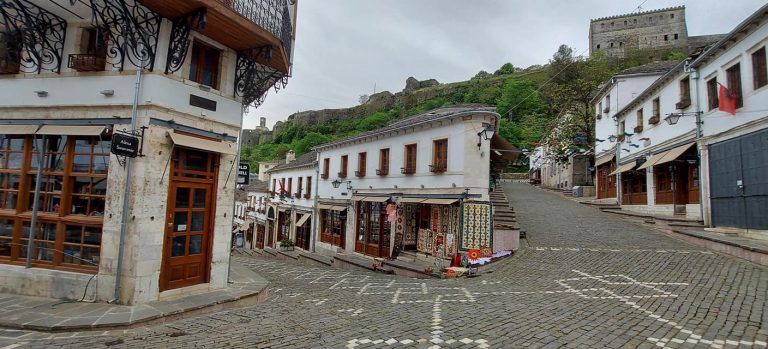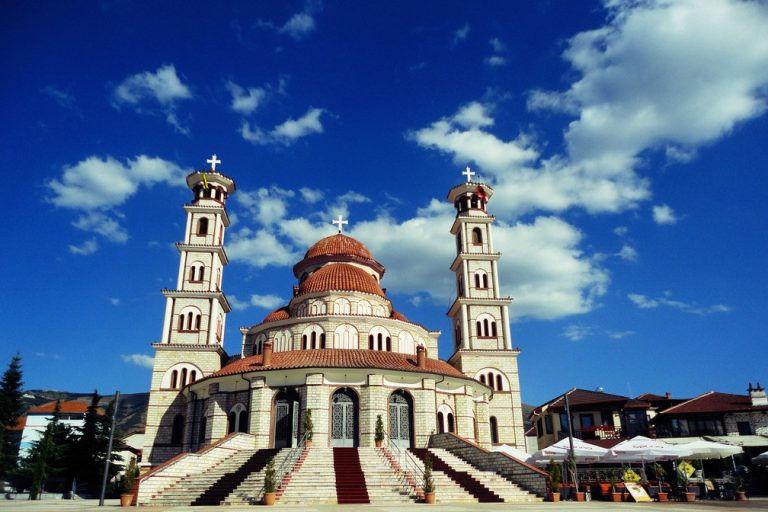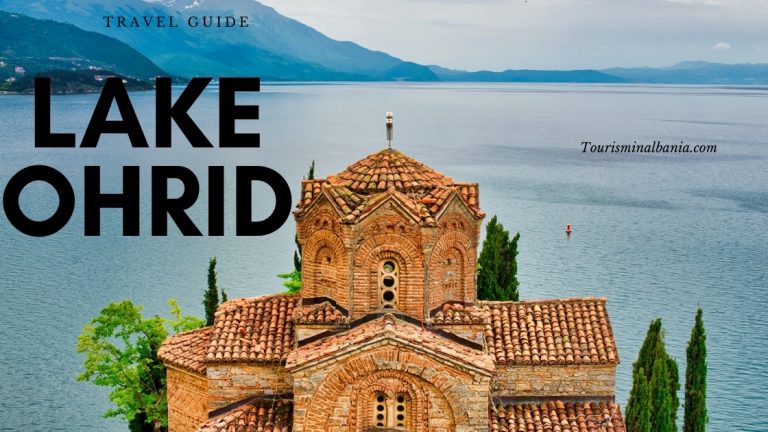6 Best Things to do in Durrës, Albania
Famous since ancient times for its active cultural life, Durres, behind the image of the classic seaside resort next door, holds significant traces of Illyrian, Hellenic, and Roman culture and buildings and works dating back to the Byzantine era.
Getting around the city is very simple: the two nerve centers are rruga Taulantia, the street parallel to the new promenade, and the Town Hall Square, Sheshi Liria, where the main streets of the old town of Durre’s start. Except for a part of Shetitorja, the long pedestrian street looking towards the sea, all the attractions we will tell you about are located in the old part of the town, i.e., in the northern part of Durrës (right side of the port looking towards the sea, for example).
Our guide to what to see in Durrës follows a well-defined route: you can decide to follow it and visit the points of interest in the order in which we are going to present them to you, or improvise, but one thing is certain: during your cultural trip you will not miss any of the city’s attractions.
Things to do in Durres
Archaeological Museum of Durrës
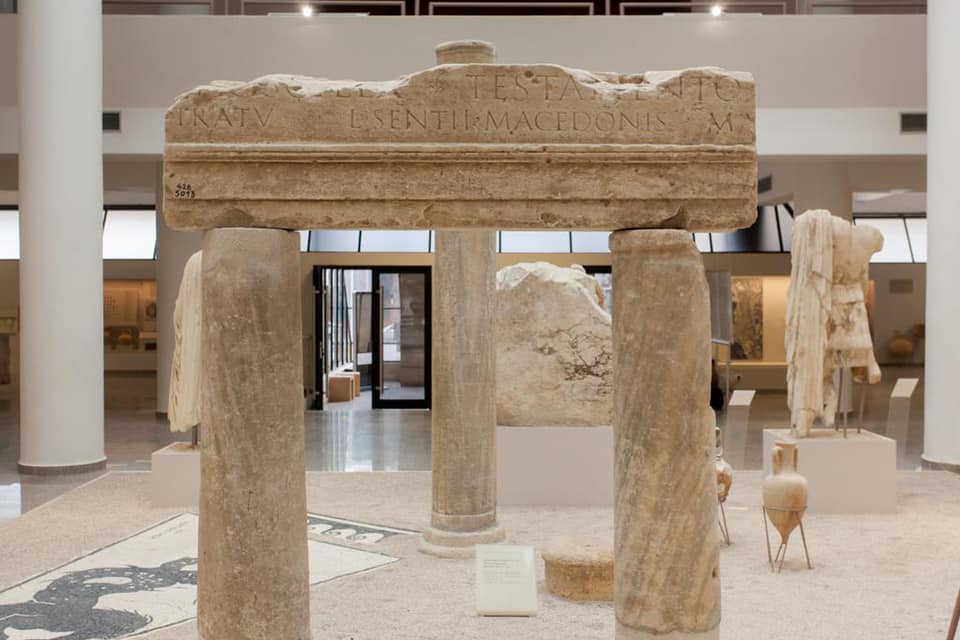
Heading downhill towards the seafront, in Taulantia street, there is another of the jewels of Durres, the Archaeological Museum, which houses the largest archaeological collection of Albania, recently renovated and officially reopened to the public on March 20, 2015, by Prime Minister Edi Rama, after four consecutive years of closure.
The museum consists of contiguous environments oriented from prehistory, starting from the findings made in the territory of Durres and the surrounding area, dating back to 2000 BC, continuing for the classical, Hellenistic, and Roman times; the photos, however, do not follow the path of the route because they are mainly made of interesting finds that are mostly from Roman times.
Among the objects worthy of note are the stone sarcophagi and Roman funerary stelae and a significant number of miniature busts depicting the goddess Venus, which clearly testifies how the city was once an important center of worship dedicated to the goddess. The outdoor area has also proved to be very pleasant and interesting because it allows you to walk through gardens and arcades where wonderful marble statues of considerable size are preserved.
The Archaeological Museum of Durres is open from Tuesday to Sunday, from 09.00 to 16.00, and the entrance ticket costs 300 leks. Our advice is to absolutely visit this place because it offers significant insight into the city’s history.
Vollga Promenade
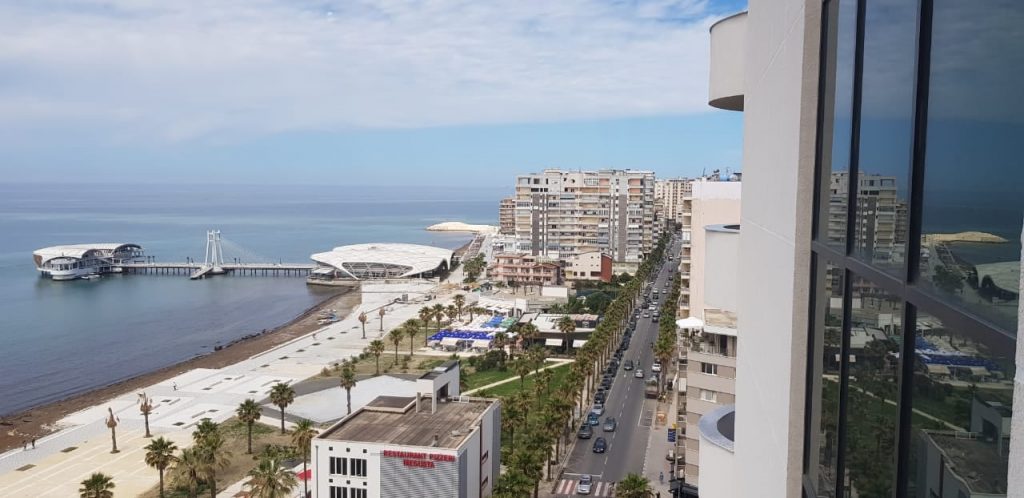
The wide promenade of Durres is undoubtedly one of the city’s main attractions, where you should not miss a nice walk.
Especially after sunset, the 17,744 m² of the promenade, divided into two by the harbor and the entire city, comes alive with stalls, rides, and thousands of people (from children to the elderly), who relax and chat during the evening xhiro. Hotels, cafes, restaurants, discos, and trendy clubs are not really lacking in this area of the city: you will be spoiled for choice!
The skyline of the buildings that frame the avenue seems to overlook the dynamic figure of the monument that closes (or opens, depending on where you start walking) the promenade: in typical socialist style, the statue recalls the vain attempt of resistance to the invasion of the troops of fascist Italy that landed here on April 7, 1939.
The Castle and the Venetian Tower
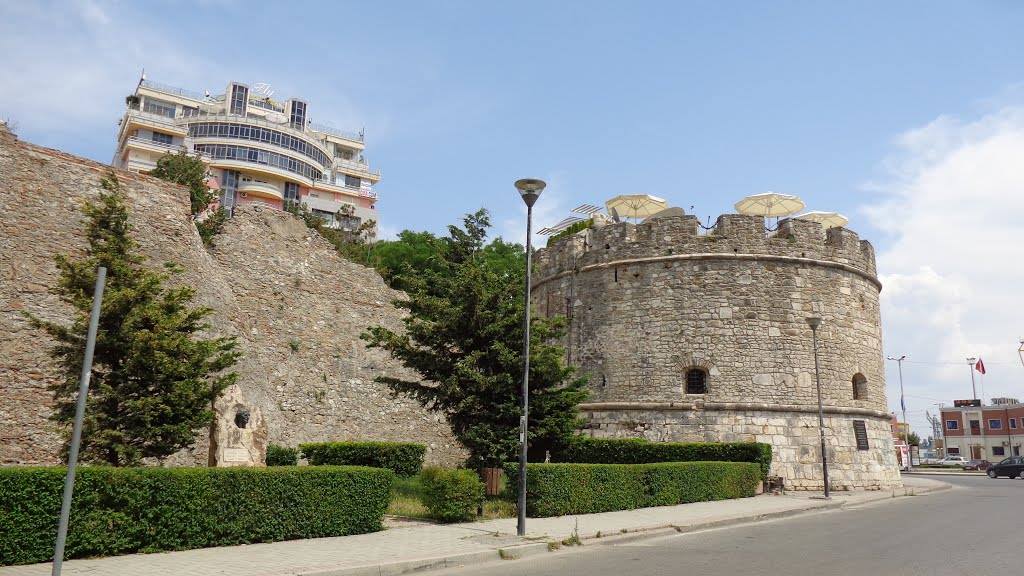
Leaving the promenade, the exploration of the city can only continue with a short walk through the main streets of the old town, once defended by the imposing walls of the Castle of Durrësit (Kalaja and Durrësit in Albanian), of which today only a Venetian fortification tower, a few meters of city walls, and three gates to the old town (two overlooking the sea, and one on the south-western side).
The stronghold was built around the 5th century A.D. at the behest of the Byzantine Emperor Anastasius I, a native of Dyrrachium (today’s Durrës), with the main purpose of defending the citadel from the barbarian hordes, who constantly threatened the empire in those years. Thus, Durrës became the most fortified town on the Adriatic coast, with walls as high as 12 m in some places, and watchtowers placed every 60 m of the perimeter; the defenses were further reinforced first by the Venetians and then by the Ottomans.
Evidence of the period when the city was under the control of the Serenissima is the Rotunda, the Venetian Tower of Durres from the 15th century, which has a diameter of 16 m and a height of just over 9 m, a single floor, and a flight of stairs leading to the crenelated roof.
You will find it at the entrance of Anastas Durrsaku Wrinkle, next to the pitch that houses the monument to Mujo Ulqinaku, a patriot and officer of the Albanian navy, killed by the fascists in 1939, during the historical resistance of Durres to the Italian invasion of Albania. The cocktail bar set up on the tower’s terrace, fortunately, hasn’t changed the original layout; the view of the sea and discreet drinks are suggestive.
Ethnographic Museum of Durres

Halfway between the Venetian tower and the Roman amphitheater is the Ethnographic Museum of Durres, otherwise known as Muzeu Aleksandër Moisiu. In fact, the museum building is the House-Museum of Aleksandër Moisiu, an Austrian actor of native language and Albanian origins, among the most famous in the German-speaking area in the early 20th century.
The first two rooms celebrate Moisiu’s acting career with film posters, photos, and other interesting objects and stage documents. Simultaneously, on the upper floor, there is a real ethnographic museum: the collection includes traditional costumes and artifacts of central Albania’s most characteristic and symbolic craftsmanship.
A small mention should also be made of the house itself, a typical 19th century Durrës house, which has preserved all the original architectural features. The price of the entrance ticket is only 100 lek.
Royal Villa of Durrës

The place of greater historical and tourist interest of Durazzo would be the Villa of Zog, the palace that the President-Re of the Albanians had built on the hill overlooking the bay. The building, designed in 1926 by architect Kristo Sotiri, was donated by the business community of Durres to the king, who loved to use it as a summer residence.
The royal villa not only enjoys an optimal position – three sides of the building are directly facing the sea – but it also has a very characteristic shape, reminiscent of an eagle (the undisputed symbol of Albania). Beyond the architectural beauty and decorative magnificence, the Villa of Zog proves to be important also from a strictly political point of view, having represented the symbol of the monarchy in the city.
After the Second World War, the villa passed into the Albanian government’s hands, which used it mostly as a government reception building for foreign delegations until it was seriously damaged and looted during the 1997 unrest. Restored by the royal family, the Villa of Zog today has a military function. It is inaccessible to the public: a real shame because it would be one of the most significant architectural testimonies of a controversial historical period.
Our advice is to venture out on the paths of the hill that houses the villa, with comfortable shoes because all in all, the path, although pleasant, is not so simple, and to get lost, once you arrive at your destination in front of this gigantic building, which shows a unique and mysterious charm, but above all enjoy the walk, between the fresh sea air, the smell of pine trees that dot the hillside, and the views of the city from several vantage points, a spectacle!
Roman Amphitheater
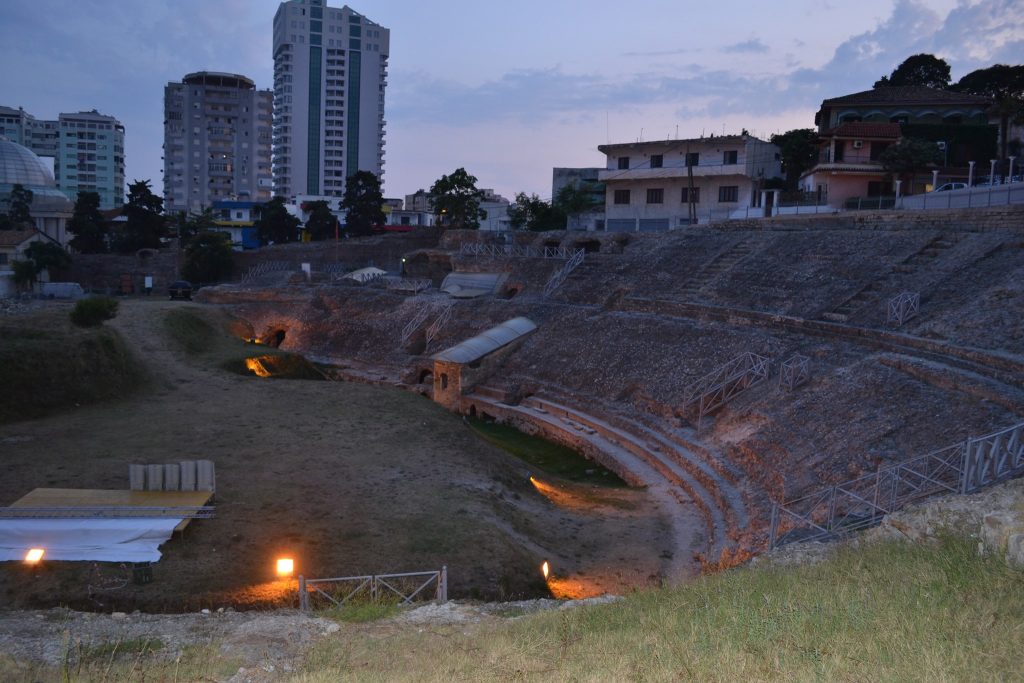
The Amphitheater of Durres. It is the largest structure of this type in all the Balkans and was built in the second century AD, during the reign of Emperor Trajan, to accommodate about 20,000 spectators.
The caveat has an elliptical shape of a good 20 m high and almost 136 in diameter, with steps originally covered with white tiles; the western part of the hemicycle rests on a hilly area opposite one is located on flat ground.
Once inside, you can admire the intricate system of stairs and galleries that were part of it and dwell on the beautiful early Christian chapel with frescoes, built in the second half of the fourth century and then embellished with fascinating mosaics in the eleventh century AD.
Discovered in 1966, the Roman amphitheater was ignored for years by the local administration, so much so that it fell into conditions of almost degradation in past years. Still, the restoration work started in 2004 by the University of Parma has completely renovated it and made it a tourist attraction of great interest. It also seems that so far, only half of the entire structure has been brought to light!
The Amphitheater of Durres is perfectly located in the city center and can be reached in a few minutes, going up Anastas Durrsaku street from the waterfront; the ticket costs 300 leks.

